Jon Racherbaumer products: page 2
| Listed | Price | |
Grand HotelJon Racherbaumer An exploration of the Hotel Trick, aka "A Night on the Town". A trick with a good plot is half the battle. This one has an interesting plot that can be styled and modified to fit your needs. Sleight-less and sleight-of-hand versions are being taught. Jon was introduced to this trick by Persi Diaconis in the 1970s. In this ebook he has traced it back to its roots, and forward to modern variations and spin-offs. The core effect: Two Queens and four Kings are shown. The Queens are tabled face down next to each other. Two Kings are added onto each Queen to form two three-card packets. After... | ★★★★★ $15 to wish list | ||
Good TurnsJon Racherbaumer Even though the small packet card trick goes at least back to Hofzinser's times Jon argues that the modern small packet trick started in the 1940s when the Buckle Count was introduced by Dai Vernon and got into full swing when the Ghost Count (Elmsley Count) entered the stage. Jon writes: When the Elmsley Count became more widely known, the genie was out of the bottle. Vernon’s “Twisting The Aces” provided momentum. Marlo’s groundbreaking work on “Think Ace” and “Touch Turn” was privately circulating and then was eventually published in The Linking Ring. By the time Larry West and Verne Chesbro published Tricks You Can... | ★★★★★ $10 to wish list | ||
Gene Castillon's Redoubling the Double CutJon Racherbaumer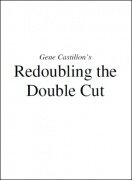 Gene Castillon presented this lecture at a meeting of Ring #27 IBM in the early 70’s, calling it "The Double Undercut Routine". This routine was designed to feature only one sleight or move—the Double Undercut. To prove the versatility and usefulness of this one move, Gene incorporated into one routine a series of different effects all accomplished by this one move. As you will discover, there are magic appearances, a simple sandwich prediction, several Ace tricks, a poker deal, and a simple triumph trick. When recently asked to lecture again, Gene pulled out his old lecture notes and was surprised... | ★★★★★ $5 to wish list | ||
Further MoreJon Racherbaumer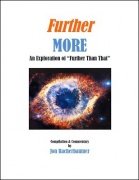 This manuscript is an exploration of the origin and evolution of one of the most dependable, commercial, and semiautomatic card tricks extant. Even its name is unusual and memorable - "Further Than That"
| ★★★★★ $10 to wish list | ||
Five Easy PiecesJon Racherbaumer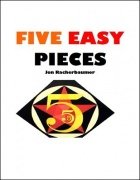 The five easy "pieces" in this manuscript are relatively easy to do. The important aspect, however, is how they are combined. The tricks are not the tricky part. They can be broken down into basic, understandable action steps. Or, to put it another way, tricks are to magic books as recipes are to cook books. One should not then equate plans, schemes, or sets of instructions with hale and hearty presentations. This is the reason the extended presentation in this manuscript surpasses mere exposition. Besides explaining the action steps of five otherwise grab-bag tricks, it reveals how they have... | ★★★★★ $10 to wish list | ||
Fingerprint DossierJon Racherbaumer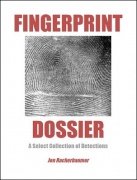 From the Preface: I must confess that my initial reaction to the Fingerprint Trick was tepid. There was no tension or conflict and it came off as being a glorified location trick. But one aspect interested me. It violated one of magic's cardinal rules - namely, never tell an audience what you are going to do before you do it. And, worse, in this case the performer divulges how he plans do it. Every presentation explains how the trick ostensibly works: The selection is found by detecting the thumbprint left on it. This is a plausible explanation, but as the trick unfolds, this casual explanation... | ★★★★★ $10 to wish list | ||
Finessed ControlsJon Racherbaumer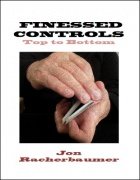 Controlling a card to the top or to the bottom is the most fundamental technique in card magic. Every card magician should have at least one good method to do that. Consequently many authors use the phrase "control card to the top/bottom with your preferred method" and leave the rest to the reader assuming that everyone already has his or her preferred method. While you might have your favorite method, the search for better ones never stops. In this ebook Jon Racherbaumer describers several - as he calls them 'finessed' methods - to control a card to the top or to the bottom. You should find... | ★★★★★ $20 to wish list | ||
Fifth-Business Monkey BusinessJon Racherbaumer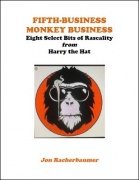 Eight select bits of rascality from Harry the Hat. From the Introduction: When Harry Anderson lived in New Orleans, we regularly discussed tricks, scams, and what Harry liked to call "throwaways that are keepers." These are tricks that symbolically serve the same purpose as Mardi Gras beads and doubloons tossed from floats during carnival season. The following 8 things in this booklet are stunts and tricks Harry performed in his inimitable, fast-and-loose way when he held court in barrooms, poolrooms, or at his night club called Oswald's. In the right time and place they are worth knowing... | ★★★★★ $12 to wish list | ||
Facsimile 6Jon Racherbaumer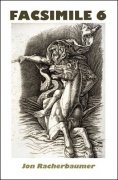 Includes a more clarified explanation of Marlo's "Super Count" routine, and a lot more.
1st edition 2017, 70 pages. | ★★★★★ $15 to wish list | ||
Facsimile 5Jon Racherbaumer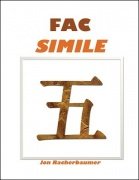
| ★★★★★ $15 to wish list | ||
Facsimile 4Jon Racherbaumer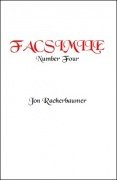
1st edition 1996, 35 pages. | ★★★★★ $15 to wish list | ||
Facsimile 3Jon Racherbaumer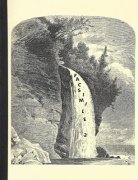 This issue of Facsimile includes the complete contents of the first two (and only) issues of Jon Racherbaumer's periodical Marlophile. Jon has reformatted Marlophile, and added some additional routines.
1st edition 1995, 50 pages; 1st digital edition 2020, PDF 50 pages. | ★★★★★ $15 to wish list | ||
Facsimile 2 (used)Jon Racherbaumer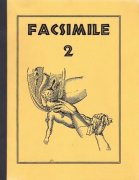 A letter-sized booklet with glue binding in excellent condition. For the content see the digital edition. | $15 to wish list | ||
Facsimile 2Jon Racherbaumer
1st edition 1994, 50 pages; 1st digital edition 2020, PDF 55 pages. | ★★★★★ $15 to wish list | ||
Facsimile 1 (used)Jon Racherbaumer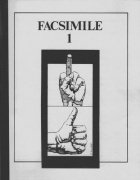 A letter-sized booklet with glue binding in excellent condition. For the content see the digital edition. | $15 to wish list | ||
Facsimile 1Jon Racherbaumer
1st edition 1983, 2nd edition 1994, 50 pages; 1st digital edition 2020, PDF 52 pages. | ★★★★★ $15 to wish list | ||
Elevation OvationsJon Racherbaumer Although Marlo is generally credited with the Elevator plot, analysis of the action steps taken in the Four Burglars, Jacob's Ladder, and Marlo's Penetration exhibit procedural similarities and could be presented as "elevating tricks" if accompanying patter expressed the "elevator" analogy. As far as the "elevator" trope is concerned, we can credit Bill Simon for naming rights.
| $19.50 to wish list | ||
Dustbin Dossier 2Jon Racherbaumer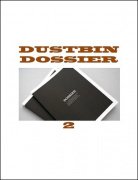 The contents of this series, for the most part, emphasize the history of effects and ideas. There are effects and methods in some of them, though.
1st edition 2014, PDF 30 pages.... | $7 to wish list | ||
Dustbin Dossier 1Jon Racherbaumer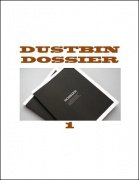 The contents of this series, for the most part, emphasize the history of effects and ideas. There are effects and methods in some of them, though. From the introduction: Dustbin Dossier will service a distinct minority interested in examining documents (letters, notes, booklets, diaries, journals) in their original, "aboriginal" forms. Personal letters, for example, are a primary source of raw, unfiltered knowledge - seasoned with salt, not sugar. They are usually characterized by their spontaneous candor and unguarded subjectivity. After all, most of them were written for one person... | $7 to wish list | ||
Dunbury DelusionsJon Racherbaumer "It is one of the very best tricks which can be done for close-up work." - Hugard and Braue from Show Stoppers With Cards From the Foreword: The Dunbury Delusion has an illustrious pedigree that has been up, down, and all around the magic scene for at least 100 years. Charlie Miller's method that was published in Expert Card Technique in 1940, more or less branded his name on it, but seven year earlier Victor Farelli published a modified version ("The Partagas Sell") in Farelli's Card Magic. He did not claim paternity but credited a Spanish magician named Partagas who apparently taught him the trick in 1908. Basic Plot: A selection "lost" in a deck is successfully found by using three... | ★★★★★ $16 to wish list | ||
Dreamwork 2Jon Racherbaumer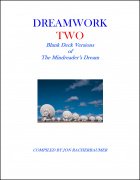 This short compilation follows on the heels of another compilation titled Dreamwork. Both relate to Bob Hummer's "The Midreader's Dream." Bob Hummer introduced to the magic world many interesting principles and effects. One of the first to make a splash was introduced in 1952. The dreamy dealer ad seemed too good to be true: A spectator merely thinks of a card and then performs a few, unseen dealing procedures with a deck of cards. The magician, whose back was turned throughout these actions, turns and faces the spectator. He takes the deck, briefly scans the cards, and consults a "dream book." He then names... | ★★★★★ $16 to wish list | ||
DreamworkJon Racherbaumer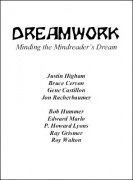 Several decades ago Bob Hummer invented a new principle which caused a short-lived stir among cardicians. The effect was called "The Mindreader's Dream". It sounds too good to be true: A spectator merely thinks of a card and performs a few, unseen dealing procedures with a deck of cards. The magician briefly scans the cards, consults a "dream book," and then names the mentally selected card. Racherbaumer collects in this ebook several improvements and variations on this basic principle, including the original Hummer method. The contributors are an eclectic group of specialists including Justin Higham,... | ★★★★★ $5 to wish list | ||
Devious DeparturesJon Racherbaumer A deep dive into Elmsley's Point of Departure. The original effect is the following. A card is chosen and placed face down on the table. The two black aces are then removed from the pack and with the utmost fairness, the chosen card is placed between them, and this sandwich is handed to a spectator to hold. On the magician's command, the chosen card vanishes and is found in the performer's pocket.
| ★★★★★ $12 to wish list | ||
Definitive Slip CutJon Racherbaumer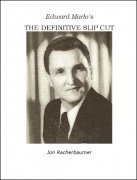 Slip Cuts play a vital role in "Cutting to the Aces," a presentation auspiciously introduced in Stars of Magic (1946). Dai Vernon's handling sparked lots of interest when it first appeared, providing strong incentive to master the Slip Cut. Cardini, who also knew a great trick when he saw one, strongly endorsed Vernon's presentation:
Therefore, this treatise begins with explanations of three versions of Ace-Cutting. This may induce... | ★★★★★ $15 to wish list |